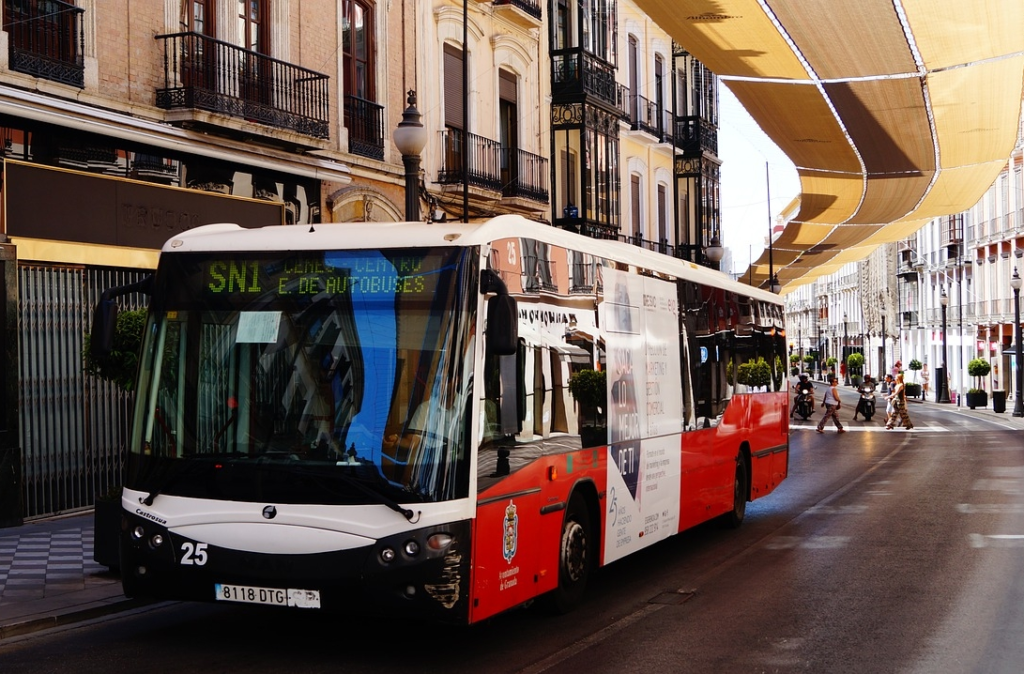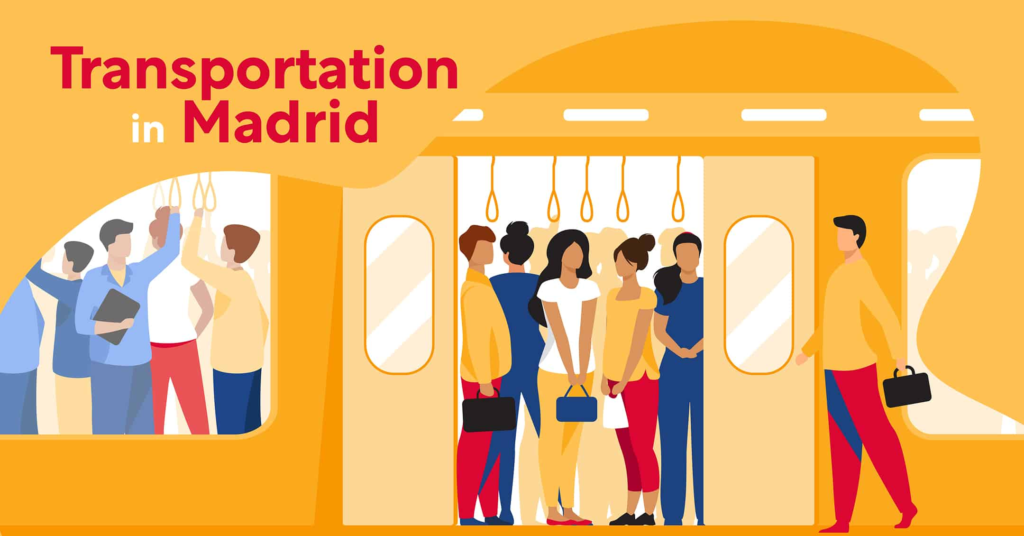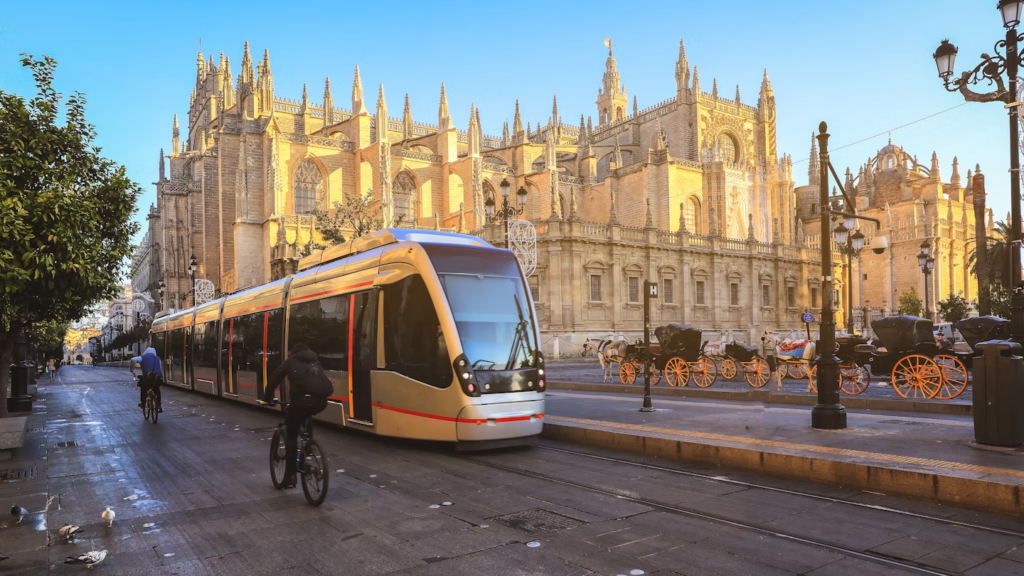One of the most convenient tools for navigating Spain’s extensive transport network is the Spain Transport Card. This guide will cover everything you need to know about the Spain Transport Card, including its benefits, how it works, where you can use it, prices, and practical tips to make your travels easier.
1. What Is the Spain Transport Card?

The Spain Transport Card is a smart card that provides access to various forms of public transportation across different regions and cities in Spain. It serves as an all-in-one travel pass, simplifying the process of using buses, metros, trams, and even certain regional trains. The card eliminates the need to buy separate tickets for each journey, making it an essential tool for both residents and travelers looking to explore the country efficiently.
Depending on the region, the card goes by different names, such as the “Tarjeta Transporte Público” in Madrid or the “T-10” in Barcelona. Despite these regional variations, the primary function remains the same: to provide seamless access to public transport services.
Read also: Why Spain Nomad Visa Is the Best in the World
2. The History of the Spain Transport Card

The concept of the transport card in Spain has evolved over the years, reflecting the country’s commitment to improving its public transportation system. In the early 2000s, various cities and regions started to adopt electronic ticketing systems to replace traditional paper tickets. The goal was to enhance efficiency, reduce costs, and offer a more user-friendly experience.
Madrid was one of the first cities to introduce a comprehensive transport card system, launching the “Abono Transportes” card in 2001. This initiative paved the way for other regions to develop their own versions, leading to the current array of transport cards available throughout Spain. Today, these cards are widely used by locals and tourists alike, offering a convenient and cost-effective way to travel.
3. How Does the Spain Transport Card Work?

The Spain Transport Card operates on a contactless system. This means that users simply need to tap their card on a reader at the entrance of a metro station, on a bus, or at other designated points. The system then deducts the appropriate fare based on the journey taken.
Each card can be loaded with different types of tickets or passes, depending on the user’s needs. For example, you can load a single journey ticket, a multi-trip pass, or even a monthly or annual subscription. This flexibility makes it easy to customize the card according to your travel habits.
In most regions, the card is rechargeable, allowing you to top it up with additional credit or renew your pass as needed. This feature is particularly useful for regular commuters who rely on public transport for their daily routines.
4. Types of Spain Transport Cards

There are several types of transport cards available in Spain, each catering to different regions and needs. Below are some of the most popular options:
1. Madrid’s Multi Card (Tarjeta Multi)
- Usage: The Multi Card can be used across all forms of public transport in the Madrid region, including metro, buses, and suburban trains (Cercanías).
- Price: The cost of the card itself is €2.50, and you can load it with various ticket options, such as the 10-trip ticket (€12.20) or the Tourist Travel Pass, which offers unlimited travel for 1 to 7 days.
- Validity: The card is valid for up to 10 years and can be recharged at metro stations, kiosks, and online.
2. Barcelona’s T-casual and T-usual Cards
- Usage: The T-casual is a single-person card valid for 10 journeys on buses, metro, and trams in Barcelona, while the T-usual is a personal pass for unlimited travel within a month.
- Price: The T-casual costs €11.35, and the T-usual is priced at €40.00.
- Validity: The T-casual is valid for one year after the first use, while the T-usual is valid for one month from the date of purchase.
3. Valencia’s Mobilis Card
- Usage: The Mobilis Card can be used on buses, metro, and trams in Valencia.
- Price: The card itself costs €2.00. A 10-journey ticket is priced at €9.00, and monthly passes start from €45.00.
- Validity: The card is rechargeable and can be used indefinitely.
4. Seville’s Consorcio Transport Card
- Usage: This card is valid for buses, metro, and trams in Seville and the surrounding metropolitan area.
- Price: The card costs €1.50 and can be topped up with various ticket types. A standard 10-trip ticket costs around €7.20.
- Validity: The card can be used repeatedly and recharged as needed.
5. Benefits of Using the Spain Transport Card

There are several advantages to using the Spain Transport Card, making it a preferred choice for both residents and tourists:
1. Convenience
The card offers seamless travel across different modes of transport, eliminating the need to purchase separate tickets for each journey. This is especially useful for tourists who plan to explore multiple cities and regions during their stay.
2. Cost Savings
Most transport cards offer discounted fares compared to single journey tickets. Additionally, monthly and annual passes provide significant savings for regular commuters.
3. Flexibility
The ability to load different types of tickets onto a single card allows users to customize their travel options according to their needs. For example, a tourist can opt for a short-term travel pass, while a local commuter might choose a monthly subscription.
4. Environmental Benefits
Using a rechargeable transport card reduces the need for paper tickets, contributing to a more sustainable public transport system.
6. How to Get a Spain Transport Card

Obtaining a Spain Transport Card is a straightforward process. Here’s how you can get one, depending on the region:
1. In Madrid
- Visit any metro station, kiosk, or authorized point of sale.
- Provide a valid ID and, in some cases, a photo (for personalized cards).
- Pay the card issuance fee and load it with your chosen ticket option.
2. In Barcelona
- Cards like the T-casual and T-usual can be purchased at metro stations, tobacco shops, and some newsstands.
- For personalized cards like the T-usual, you may need to provide an ID and a photo.
3. In Valencia
- The Mobilis Card is available at metro and tram stations, as well as some kiosks.
- No ID is required for the standard card, but you will need one for personalized options.
4. In Seville
- Purchase the Consorcio Transport Card at metro and tram stations or authorized sales points.
- You may need an ID for certain types of passes.
7. Prices and Ticket Options

The cost of using a Spain Transport Card varies depending on the region and the type of ticket or pass you choose. Here’s a breakdown of some common options:
1. Single Journey Tickets
- Typically range from €1.50 to €2.00, depending on the city and distance traveled.
2. Multi-Journey Tickets (10 Journeys)
- Madrid: €12.20
- Barcelona: €11.35
- Valencia: €9.00
- Seville: €7.20
3. Monthly and Annual Passes
- Madrid: Monthly pass prices range from €54.60 (zone A) to €131.80 (zone E2). Annual passes are available at a discounted rate.
- Barcelona: The T-usual costs €40.00 per month. Annual passes are also available.
- Valencia: Monthly passes start from €45.00.
- Seville: Monthly passes are priced around €35.00.
8. Practical Tips for Using the Spain Transport Card

1. Check Your Balance Regularly
It’s a good idea to check the balance on your transport card regularly, especially if you’re using a multi-trip or time-limited pass. Most metro stations have machines where you can check your balance and top up if necessary.
2. Keep Your Card Safe
If your transport card is lost or stolen, you may need to pay for a replacement and any remaining balance could be lost. Some regions offer the option to register your card, which can help recover your balance in case of loss.
3. Understand Zone Boundaries
Spain’s public transport networks often operate on a zone-based system, with fares varying depending on the zones you travel through. Make sure you’re aware of the zones included in your pass to avoid any unexpected charges.
4. Use Contactless Payment for Short Visits
If you’re only in Spain for a short visit, consider using contactless payment (via your smartphone or bank card) for single journeys, as it can sometimes be more convenient than purchasing a transport card.
9. Spain Transport Card for Tourists

For tourists, the Spain Transport Card offers an excellent way to explore cities and regions without the hassle of buying individual tickets for each journey. Many cities offer special tourist passes that provide unlimited travel for a set number of days, often including discounts on popular attractions.
1. Madrid Tourist Travel Pass
- Available for durations from 1 to 7 days.
- Prices range from €8
(1 day, zone A) to €70.80 (7 days, all zones).
- Includes unlimited travel on metro, bus, and Cercanías trains.
2. Barcelona Hola BCN! Travel Pass
- Available for durations from 2 to 5 days.
- Prices range from €16.30 (2 days) to €38.00 (5 days).
- Includes unlimited travel on metro, bus, tram, and airport transfer.
3. Valencia Tourist Card
- Available for 24, 48, or 72 hours.
- Prices range from €15.00 to €25.00.
- Includes unlimited travel and discounts on museums, attractions, and restaurants.
10. Future Developments in Spain’s Transport System

Spain is continuously working to improve its public transport network, and the future holds several exciting developments that could impact the use of transport cards.
1. Integration of Regional Systems
There are ongoing efforts to integrate various regional transport systems into a single, unified network. This would allow a single transport card to be used seamlessly across different cities and regions, making travel even more convenient.
2. Expansion of Contactless and Mobile Payments
As digital technology advances, more regions are adopting contactless payment options, including the ability to use smartphones and wearables to pay for public transport. This trend is expected to continue, making it even easier to access public transport services without the need for a physical card.
3. Eco-Friendly Initiatives
Spain is also focused on making its public transport system more environmentally friendly. This includes the introduction of electric buses, the expansion of bike-sharing programs, and the promotion of public transport as a sustainable alternative to car travel.
Conclusion
The Spain Transport Card is a valuable tool for navigating the country’s extensive public transport network, offering convenience, cost savings, and flexibility for both residents and visitors. With various options tailored to different regions and needs, the card simplifies travel across cities like Madrid, Barcelona, Valencia, and Seville. As Spain continues to develop and innovate its transport system, the transport card is likely to remain an essential part of the country’s infrastructure, helping millions of people get where they need to go efficiently and affordably. Whether you’re a local commuter or a first-time visitor, understanding how to use the Spain Transport Card can make your journey through this beautiful country smoother and more enjoyable.
Read more: Things to Avoid While Traveling for the First Time










